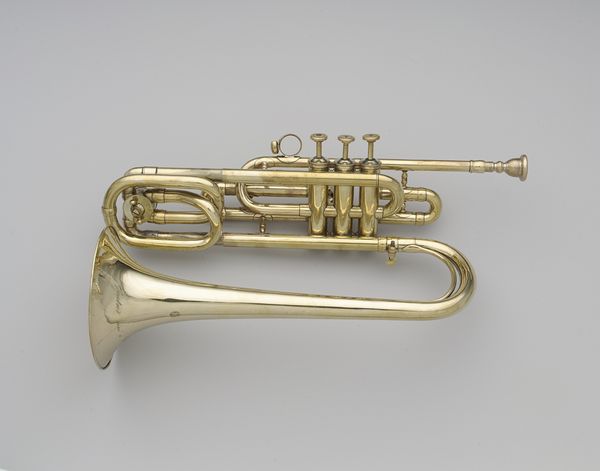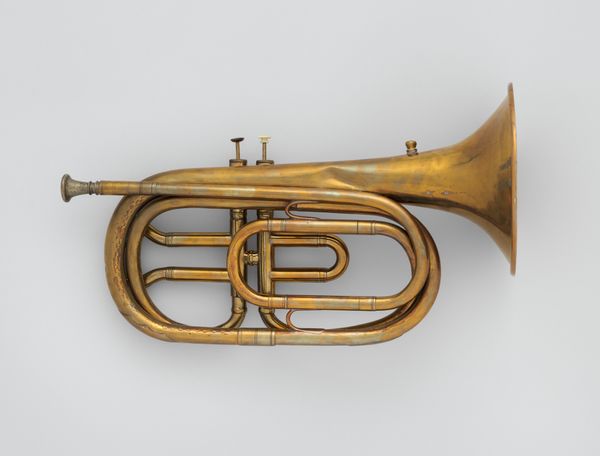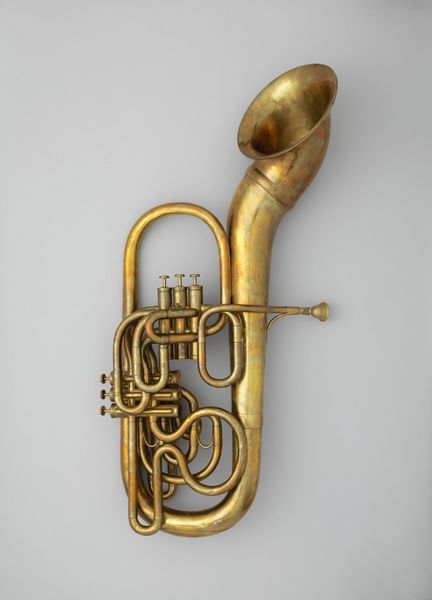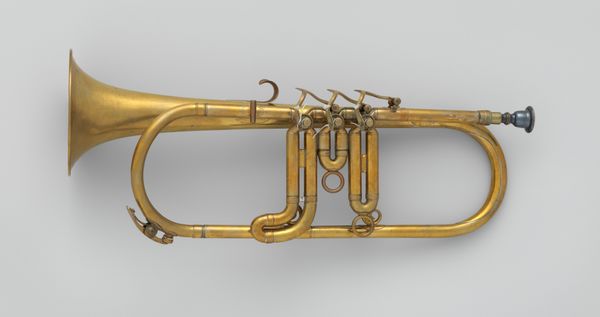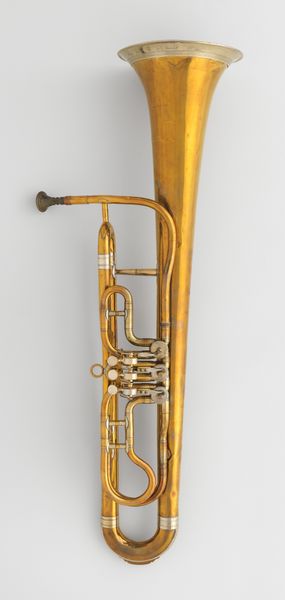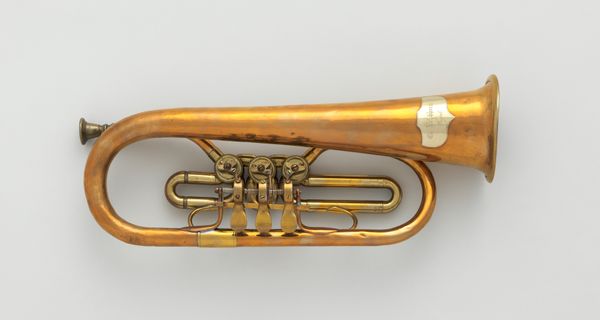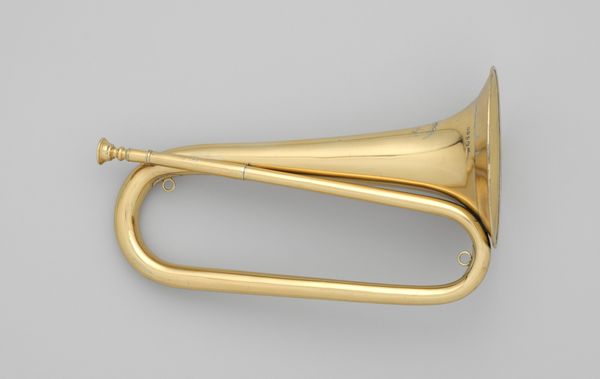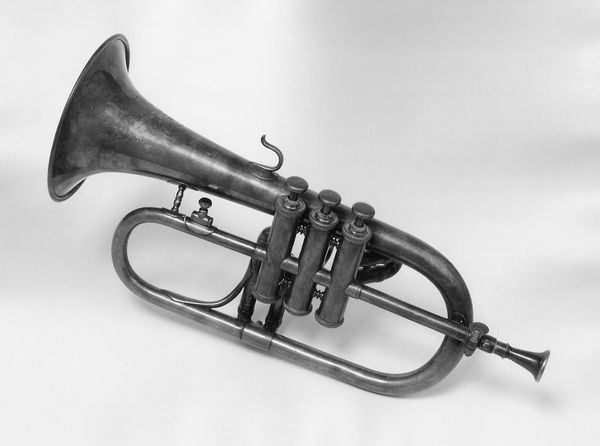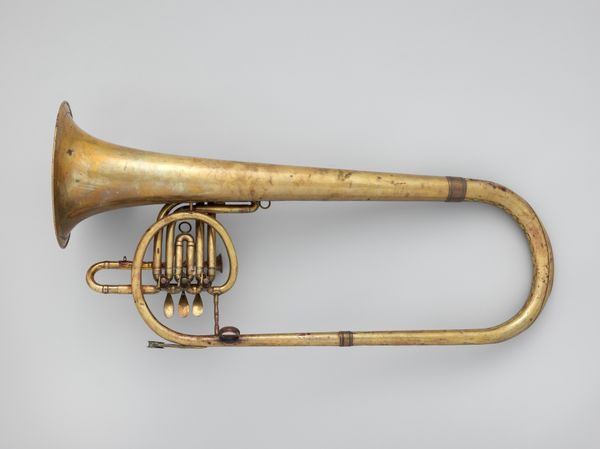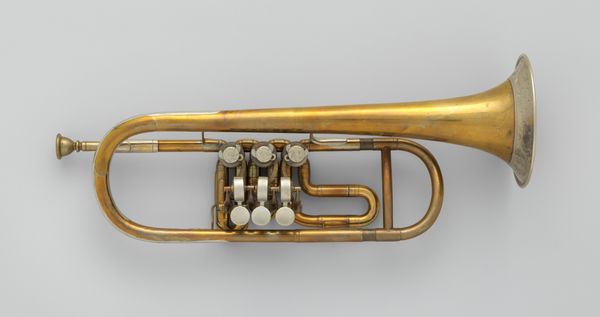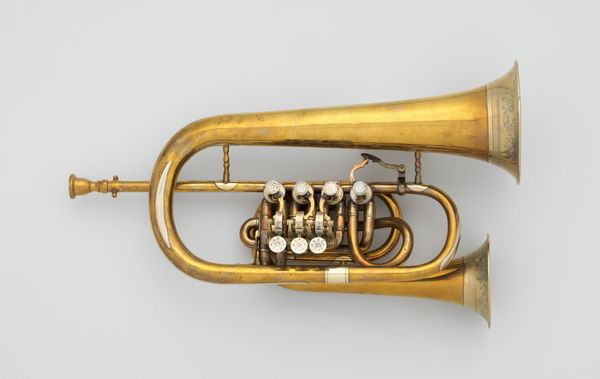
brass, metal
#
brass
#
metal
Dimensions: height 49.7 cm, width 20.0 cm, diameter 15.0 cm
Copyright: Rijks Museum: Open Domain
This is a bugle, created by Egidius Petrus van Osch, and the material is primarily metal. What immediately strikes you is the bugle's intricate structure, composed of winding tubes, valves, and the flared bell, giving a visual harmony. The patina of the metal provides a tactile sense. The form of the bugle, with its smooth curves and cylindrical shapes, demonstrates an understanding of functionality and aesthetics. At first glance, it's easy to see this simply as a musical instrument. However, on closer inspection, it’s clear that the bugle's construction is loaded with cultural significance. Think about the semiotics of musical instruments and how they can be associated with the cultural codes and values that shape our understanding of music and its role in society. Notice how the formal elements of the bugle—its shape, material, and texture—all contribute to its meaning. It's a reminder that objects, like works of art, do not have fixed meanings but are subject to continuous interpretation and reinterpretation within a larger cultural and philosophical framework.
Comments
No comments
Be the first to comment and join the conversation on the ultimate creative platform.
